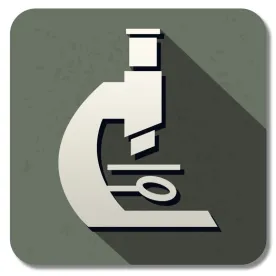As reported previously, the Federal Circuit has denied rehearing in Ariosa Diagnostics, Inc. v. Sequenom, Inc. I wrote about Judge ‘Dyk’s opinion concurring in the denial but offering alternative views on patent eligibility in this article. Here, I look at the other concurring opinion, which was authored by Judge Lourie and joined by Judge Moore.
Judge Lourie’s Tutorial On Patent Eligibility
Judge Lourie’s opinion starts where you might expect a scientist to start, with a tutorial on laws of nature. (Judge Lourie received a Master’s degree in organic chemistry from the University of Wisconsin and a Ph.D. in chemistry from the University of Pennsylvania.) In particular, Judge Lourie emphasizes that “Laws of nature are exact statements of physical relationships, deduced from scientific observations of natural phenomena,” and gives examples such as E=mc², F=ma, “and many more.”
With that in mind, Judge Lourie states that while laws of nature “are not and should not be patent-eligible subject matter,” the same rule does not (should not?) apply to “methods that utilize laws of nature.” Judge Lourie reminds us that “nothing in the physical universe would be patent-eligible” since “all physical steps of human ingenuity utilize natural laws or involve natural phenomena.”
Judge Lourie also explains “abstract” steps:
Abstract steps are, axiomatically, the opposite of tangible steps; that which is not tangible is abstract. But steps that involve machines, which are tangible, steps that involve transformation of tangible subject matter, or tangible implementations of ideas or abstractions should not be considered to be abstract ideas. ….
But the fact that steps are well-known, although relevant to other statutory sections of the patent law, does not necessarily make them abstract.
Is this a critique of University of Utah Research Foundation v. Ambry Genetics Corp.?
Judge Lourie’s Concerns With The Sequenom Claims
Turning to the claims at issue, Judge Lourie raises questions about their breadth, but not their eligibility:
The claims in this case perhaps should be in jeopardy, not because they recite natural laws or abstract ideas, but because they may be indefinite or too broad. But they should not be patent-ineligible on the ground that they set forth natural laws or are abstractions.
[N]either of the representative claims here merely recites a law of nature, a natural phenomenon, or an abstract idea. The claims rely on or operate by, but do not recite, a natural phenomenon or law. The claimed invention involves taking maternal serum, separating it, amplifying the genetic material to detect cffDNA, and running tests to identify certain genes or genetic defects; these are all physical, and not insignificant, steps requiring human intervention. The claims might be indefinite or too broad …. But the finer filter of § 112 might be better suited to treating these as questions of patentability, rather than reviewing them under the less-defined eligibility rules.
Is this a veiled reference to Mayo v. Prometheus, where Justice Breyer’s “decline[d] the Government’s invitation to substitute §§102, 103, and 112 inquiries for the better established inquiry under §101“?
Can The Supreme Court Undo The Damage Of Mayo?
While Judge Dyk’s concurrence offers a way to refine the Mayo test for patent eligibility, Judge Lourie seems to find it to be more fundamentally flawed:
[T]he claims here are directed to an actual use of the natural material of cffDNA. They recite innovative and practical uses for it, particularly for diagnostic testing: blood typing, sex typing, and screening for genetic abnormalities. And it is undisputed that before this invention, the amplification and detection of cffDNA from maternal blood, and use of these methods for prenatal diagnoses, were not routine and conventional. But applying Mayo, we are unfortunately obliged to divorce the additional steps from the asserted natural phenomenon to arrive at a conclusion that they add nothing innovative to the process.
Judge Lourie’s conclusion is even more direct:
[I]t is unsound to have a rule that takes inventions of this nature out of the realm of patent-eligibility on grounds that they only claim a natural phenomenon plus conventional steps, or that they claim abstract concepts. But I agree that the panel did not err in its conclusion that under Supreme Court precedent it had no option other than to affirm the district court.
Judge Lourie’s Work-Around
Perhaps wanting to avert the “crisis of patent law and medical innovation [that] may be upon us,” Judge Lourie suggests that presenting diagnostic method claims in Jepson format might avoid patent eligibility issues. He even goes so far as to provide sample language for Sequenom’s claims:
In a method of performing a prenatal diagnosis using techniques of fractionation and amplification, the improvement consisting of using the non-cellular fraction of a maternal blood sample.




 />i
/>i

